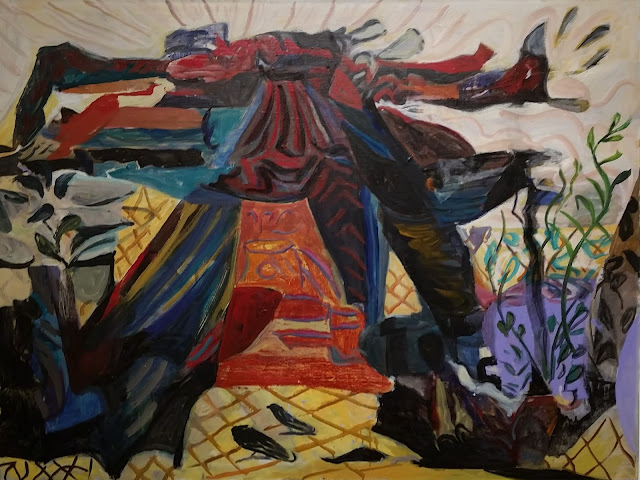William Eckhardt Kohler is a painter who lives in New York City, though he still retains a base in Chicago where he lived and worked for many years. I met up with him at Linda Warren Projects a few weeks ago, to talk about two shows that he has installed there (
on display until August 13th 2016). One is a show that he curated himself, called
New York; New Friends, and it comprises one of his own paintings in company with paintings and sculptures by artists from New York with whom he shares an affinity, not so much in the handling of the medium of paint, but in their dedication to its continued expressive possibilities.
 |
| "Knock", oil on linen, 60" x 48", 2015 |
His particular mastery of oil paint on canvas is in full evidence in the gallery containing his own paintings. Collectively titled
Alchemy+Elements, his paintings are typically four feet to six feet on their longest side, and work from the first lay-in up to the final overlaying of thicker forms in a classically structured surface, despite their semi-abstract content. Go in close, and you see thin washes of paint, then more solid brushwork, then impasto, then his second and third thoughts, with scrapings-off and addings-on, all coalescing in forms that hint at representational elements (doorways, ladders, boats, seascape) but which exist in a creatively tense space between pure enjoyment of the sensuality of oil paint and gestures in the direction of narrative meaning.
 |
| "The Queen's Canopy", oil on linen, 36" x 48", 2016 |
We talked for more than an hour about these matters, and his habit of piling up forms in the centre of the picture, and his use of high-keyed colour and contrasting black. We spoke about the Chicago and New York art scenes, the future of the gallery system, and what artists learn as they grow older. It's a long-established facts that artists don't need to be personally all that interesting in order to produce good work. But in the case of Kohler, his paintings show a mixture of intellectual complexity and directness that happen to coincide with the man.
If you live in Chicago, you have just under two weeks to experience one part of this equation for yourself.


